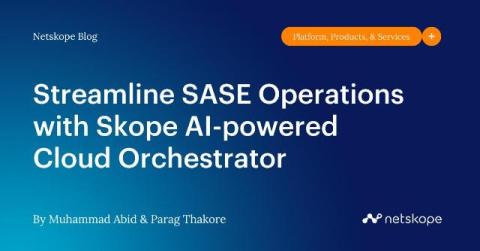Streamline SASE Operations with Skope AI-powered Cloud Orchestrator
This is the third blog in our series, where we embark on a journey of Branch Transformation with the Next Gen SASE Branch solution. Built on the Netskope One SASE platform, the Next Gen SASE Branch solution combines its three layers–Context-aware SASE Fabric, Zero Trust Hybrid Security, and a SkopeAI-powered Cloud Orchestrator–into a unified cloud offering.











